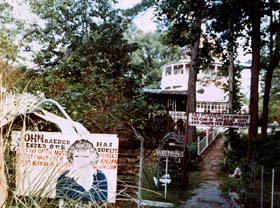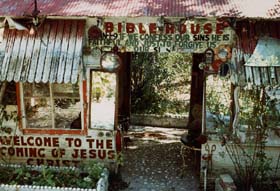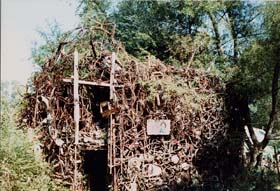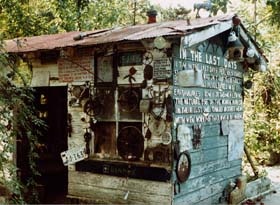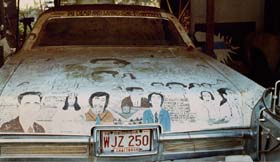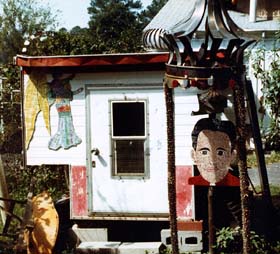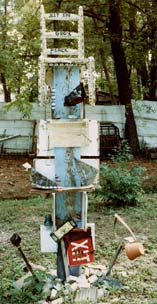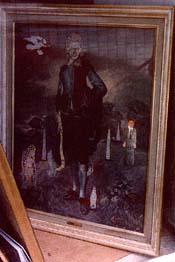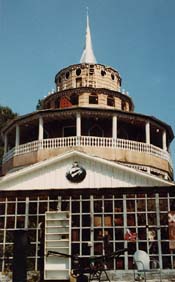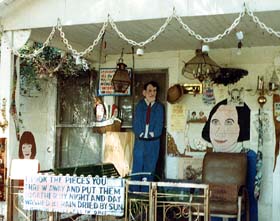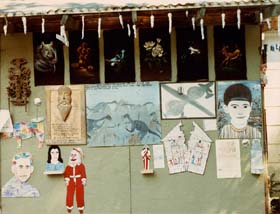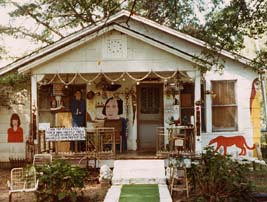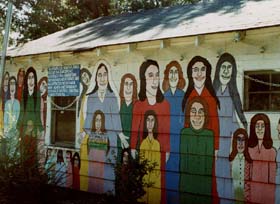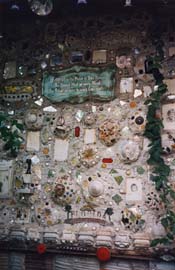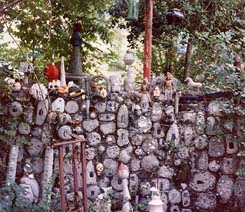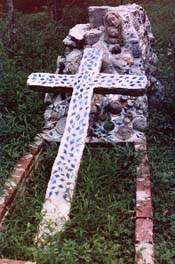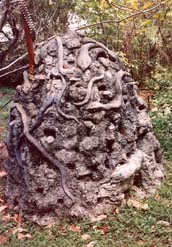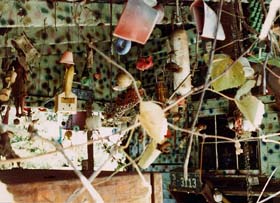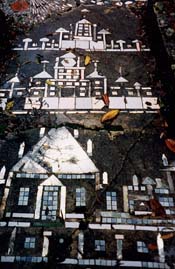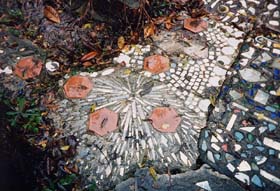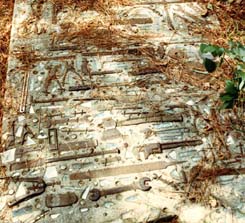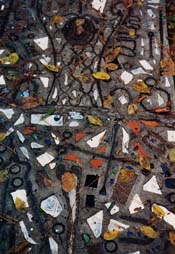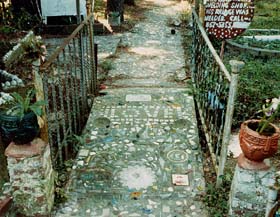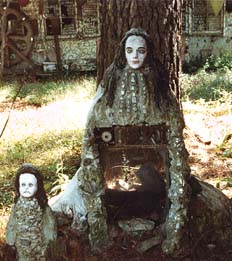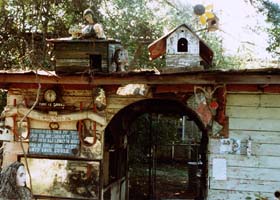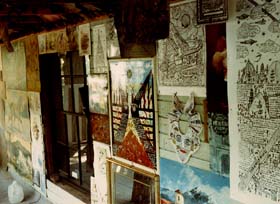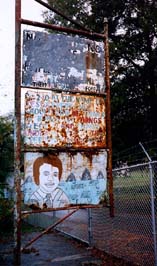
This page has been replaced by a new page here
Howard Finster's Paradise Garden
Near Summerville, GA
Circa 1988-1990
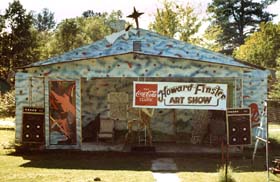
Howard Finster is a virtual paradigm for the rural southern "20th Century folk artist." Before turning to art at god's command he was a preacher and a bike repairman, among other things, who made tramp-art-like clock cases. Once he got going, his art was prolific, interesting, visionary and cheap. He built an environment that was stunning in whole and in many of its parts. Finster himself was personally accessible, even if there was an obvious cultural distance as hipster visitors listened politely to his monologues and sermons. Ultimately, the only bit of outsider prestige he was missing was the extra aura of being black.
Although Finster may have underpriced his work in the early days, it was clear that he knew what he was about. And as perfectly as he represented so much that was attractive in the wave of self-taught artists who found success in the '80s, he also came to reflect the pitfalls of that success. Endless repetition of work fit mostly for gift shops did nothing for the credibility of more ambitious pieces. Quality plummeted across the board. Photocopied text replaced writing on low-end pieces and fade-prone markers replaced paint. He enlisted family members to assist with the mass production. Eventually the best parts of his Garden were sold off. Almost as quickly as he established himself as an artist of extraordinary vision, Finster raised the question: What happens when such an artist, call him self-taught, outsider or folk, becomes so thoroughly engaged with the art market? What does it mean to be a post-outsider?
Finster's family is managing the Garden more like a tourist trap, which isn't the worst possible fate. Perhaps if admission had been charged all along, there would have been more incentive to preserve the site's best features.
In any case, when I shot these images Finster was already gearing up for the assembly line approach he took in the '90s. But the Garden still contained much of his greatest work, even if the battle against natural decay (much less voracious collectors) was being lost.
The pictures include my all-time favorite Finster work, his improvements on Blue Boy, which I was only able to photograph through a window of the World's Folk Art Church. If I knew then what I did now, I would have done whatever it took to buy it. But it's only one of many that got away.
The Latest Stuff | Roadside art | Outsider pages | The idea barn | About | Home
Privacy Policy
Copyright Interesting Ideas 2000


